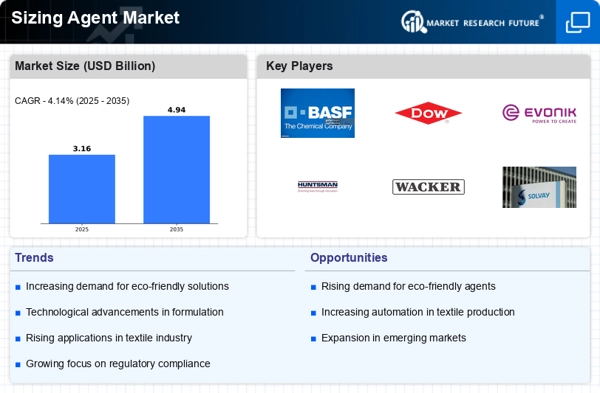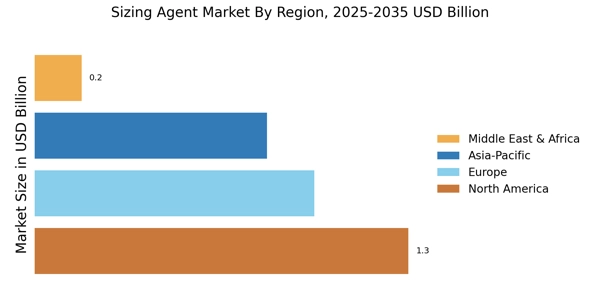Expansion of Emerging Markets
The Sizing Agent Market is witnessing substantial growth due to the expansion of emerging markets, particularly in Asia and Africa. These regions are experiencing rapid industrialization and urbanization, leading to increased demand for various products, including textiles and paper. As local manufacturers ramp up production to meet this demand, the need for effective sizing agents becomes paramount. Market analysis suggests that the Sizing Agent Market in these regions could grow at a rate of 5% annually, driven by investments in manufacturing capabilities and infrastructure. This trend indicates a promising future for the Sizing Agent Market, as companies look to capitalize on the burgeoning opportunities presented by these emerging markets.
Growth of the Textile Industry
The Sizing Agent Market is closely linked to the growth of the textile industry, which continues to expand due to rising consumer demand for apparel and home textiles. As the textile sector evolves, the need for effective sizing agents that enhance fabric quality and performance becomes increasingly critical. Recent statistics indicate that the textile industry is projected to grow at a rate of 4% annually, which directly influences the demand for sizing agents. This growth is particularly pronounced in emerging markets, where rising disposable incomes and changing fashion trends are driving increased production. Consequently, the Sizing Agent Market is poised to benefit from this upward trajectory, as manufacturers seek to improve the quality and durability of their textile products.
Regulatory Compliance and Standards
The Sizing Agent Market is significantly influenced by regulatory compliance and standards that govern the use of chemicals in manufacturing processes. Stricter regulations aimed at ensuring product safety and environmental protection are prompting manufacturers to reformulate their sizing agents. This shift is leading to the development of safer, more sustainable products that meet regulatory requirements. For instance, compliance with REACH regulations in Europe has necessitated the reformulation of many chemical products, including sizing agents. As a result, companies that proactively adapt to these regulations are likely to gain a competitive edge in the Sizing Agent Market, as they can offer products that align with consumer expectations for safety and sustainability.
Rising Demand for Eco-Friendly Products
The Sizing Agent Market is experiencing a notable shift towards eco-friendly products, driven by increasing consumer awareness regarding environmental sustainability. As industries strive to reduce their carbon footprint, the demand for biodegradable and non-toxic sizing agents is on the rise. This trend is particularly evident in the textile and paper industries, where manufacturers are seeking sustainable alternatives to traditional sizing agents. According to recent data, the market for eco-friendly sizing agents is projected to grow at a compound annual growth rate of approximately 6% over the next five years. This growth is indicative of a broader movement within the Sizing Agent Market, where sustainability is becoming a key differentiator for brands aiming to appeal to environmentally conscious consumers.
Technological Innovations in Sizing Agents
Technological advancements are playing a pivotal role in shaping the Sizing Agent Market. Innovations in formulation and application techniques are enhancing the performance of sizing agents, leading to improved efficiency and effectiveness in various applications. For instance, the development of nano-sized particles in sizing agents has shown to enhance adhesion properties and reduce the amount of product required, thereby lowering costs for manufacturers. Furthermore, the integration of digital technologies in production processes is streamlining operations and improving product quality. As a result, the Sizing Agent Market is witnessing a surge in demand for technologically advanced products, which are expected to capture a larger market share in the coming years.


















Leave a Comment